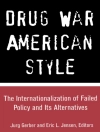This book shows why the study of schooling matters to the history of twentieth-century Britain, integrating the history of education within the wider concerns of modern social history. Drawing on a rich array of archival and autobiographical sources, it captures in vivid detail the individual moments that made up the minutiae of classroom life. It focuses on elementary education in interwar London, arguing that schools were grounded in their local communities as lynchpins of social life and drivers of change. Exploring crucial questions around identity and belonging, poverty and aspiration, class and culture, behaviour and citizenship, it provides vital context for twenty-first century debates about education and society, showing how the same concerns were framed a century ago.
قائمة المحتويات
Map of Inner London
Introduction
Part I School and community
1 The school as a community
2 The school in the community
Part II What were schools for?
3 Preparing for the future
4 Fighting poverty
5 Brightening lives
6 Making citizens
7 Teaching morals
8 A sense of place
Conclusion
Bibliography
Index
عن المؤلف
Hester Barron is Senior Lecturer in History at the University of Sussex












